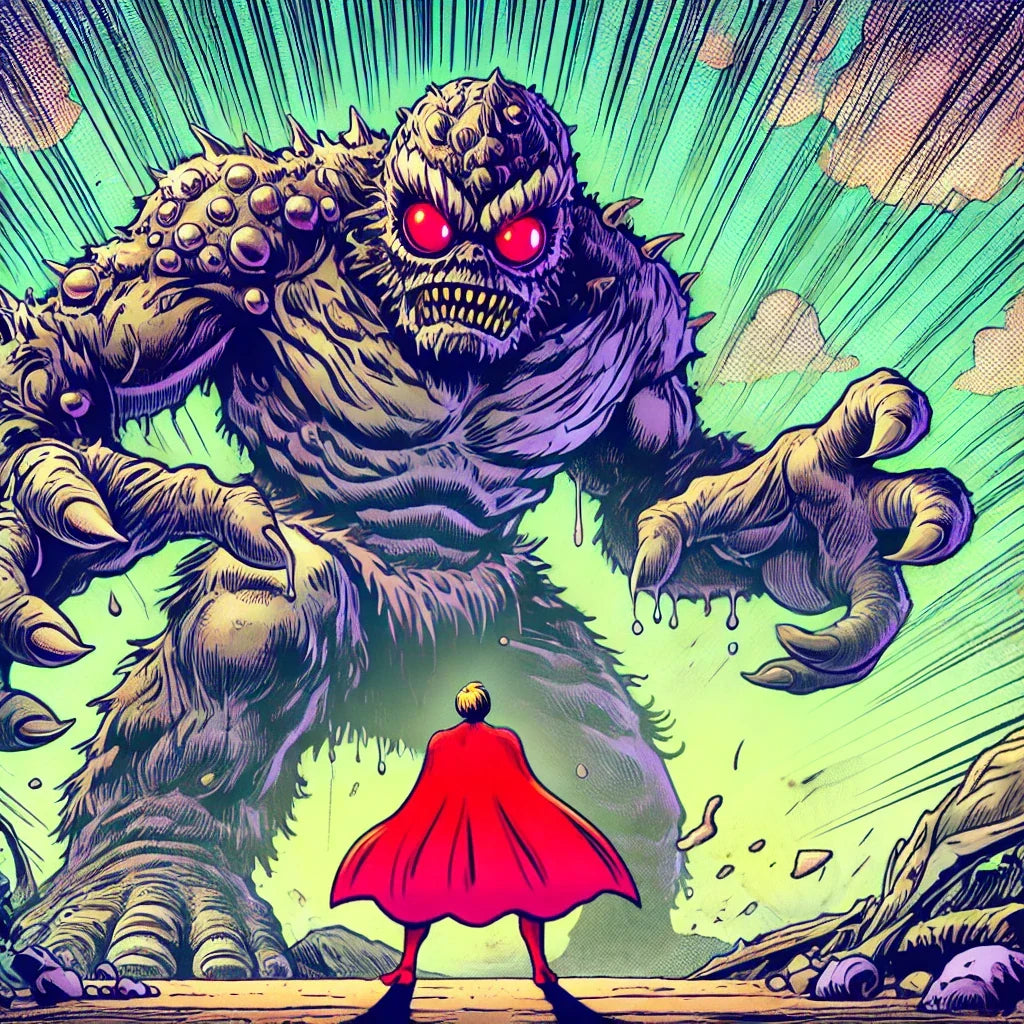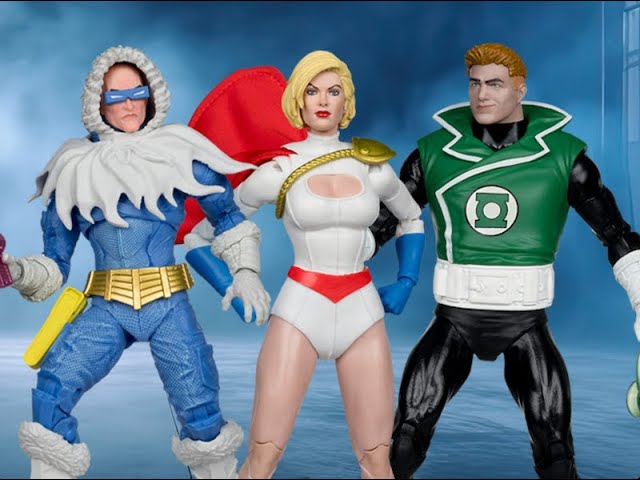Blog

Blog
What Small Businesses Offer That Amazon and Walmart Never Will
by David Gibbens on Apr 23 2025
💡 Why shopping small makes a big difference
In a world dominated by two-day shipping, automated recommendations, and massive retail ecosystems, it’s easy to forget there’s an alternative. One with heart. One with soul. One with real people behind the scenes.
We're talking about small businesses.
Whether it's a toy shop, a bookstore, a hobby store, or an online niche boutique—small businesses bring something to the table that Amazon, Walmart, and other big-box giants simply can’t replicate.
Here’s why:
🔍 1. Curated, Not Crowded
Big platforms offer everything. And that’s often the problem.Small businesses thrive on intentional curation—whether it’s a collection of the best figures in a toy line, the coolest indie board games, or the niche collectibles no algorithm could surface. It’s not about having everything. It’s about having the right things.
🤝 2. Actual Human Support
When you buy from a small business, you’re not submitting a support ticket into the abyss.You’re talking to a real person—often the owner themselves—who cares about your order, your questions, and your satisfaction.
📦 3. Thoughtful, Careful Shipping
Small businesses know their products—and their customers—deserve care.From sturdy packaging to personalized touches, every order feels like it came from someone who actually gives a damn. You’re not getting a toy tossed in a mailer with your shampoo.
❤️ 4. Purpose Over Profit
Small businesses are built by people who believe in something—whether it’s community, creativity, or just a love for what they do.They’re not answering to shareholders or quarterly projections. They’re building something meaningful.
📈 5. Your Purchase Makes a Real Impact
Every order placed with a small business supports someone’s dream.It pays rent. It fuels growth. It creates jobs. And it keeps more dollars in your local economy instead of being siphoned into corporate conglomerates.
🔄 6. Agility and Adaptability
Small businesses can turn on a dime. They can add new products, shift their strategy, or listen to feedback and implement it fast.They’re not waiting for approval from five layers of executives. They’re moving in real time, with their customers in mind.
🛠️ 7. Niche Is Their Superpower
The beauty of small businesses is that they can go deep where big stores stay shallow.They become experts in the things they love—whether that’s Transformers, Gundam, retro games, or tabletop RPGs. Their niche focus means better selection, smarter recommendations, and more passion.
🌱 8. Built With and For Community
Small businesses often double as gathering points—whether that’s in-store or online.They create a sense of belonging. They remember your name. They care if your kid loved their birthday figure. They know which version of Batman you’ve been hunting.
🎨 9. Experiences You Actually Remember
Personal notes. Custom bundles. Surprise gifts. Honest recommendations.Shopping small turns a transaction into a story—one you’ll want to share and come back to.
🏆 10. They’re Part of the Culture—Not Just Profiting Off It
Many small business owners are collectors, hobbyists, and fans themselves.They’re not just selling what’s trending. They’re living it. That insight and authenticity shows up in everything—from what they stock to how they serve their customers.
✨ The Bottom Line
Big retailers offer convenience. But small businesses offer connection.
When you shop small, you’re not just making a purchase—you’re making a difference.You’re choosing people over platforms. Passion over profit. Meaning over mass production.
And that matters—especially in the world we live in today.
📦 Support small. Share their stories. And remember—big isn’t always better.

Blog
McFarlane Toys is Back: A 2025 Comeback Story for the Ages
by David Gibbens on Apr 22 2025
After a few rocky years of overproduced peg-warmers and fan frustration, McFarlane Toys has come out swinging in 2025 with what might be their most exciting year in a decade.
Collectors have taken notice—and so has the rest of the industry.
From Shelf-Sitters to Sell-Outs
In recent years, McFarlane flooded shelves with too many variants, obscure characters, and sometimes questionable articulation choices. The result? A brand that started to feel out of touch with its own fanbase.
But 2025 has flipped the script.
McFarlane has tightened its release strategy, putting the spotlight back on core characters, modern sculpts, and much more collector-savvy decisions. The DC Multiverse line is at the forefront of this shift. With figures tied to upcoming movies, classic comic storylines, and long-requested characters finally getting the spotlight, it’s a wave of smart, exciting releases.
A Clearer Vision—and Fans Are Responding
This year’s lineup feels focused and fan-first. Rather than flooding the market, McFarlane has leaned into curated drops, stronger sculpts, and bold accessories. The results are speaking for themselves—figures are selling out fast, online buzz is high, and collector communities are once again buzzing with anticipation instead of criticism.
Whether it’s the return of deep-cut fan-favorites or a revitalized approach to figure articulation and paint apps, it’s clear: McFarlane is listening.
A Studio Reinvented
Todd McFarlane’s brand feels refreshed, recalibrated, and reinvigorated. The 2025 releases showcase a studio that’s taken feedback seriously and realigned with what made them great in the first place—killer character design, comic-book flair, and figures that actually move the way fans want them to.
If the rest of 2025 looks anything like the first few months, McFarlane Toys isn’t just back—they might be leading the pack.

Blog
The Tariff Impact on Toys: What Collectors Need to Know
by David Gibbens on Apr 21 2025
🎯 How the Tariff Battle is Shaping the Toy Industry — And What It Means for You
Over the past few years, tariffs on imports from China have shaken up many industries—but few have felt it as acutely as the toy world. With the majority of toys and collectibles manufactured overseas, especially in China, U.S. businesses and consumers alike have been caught in the crossfire of an ongoing trade war.
Why Are Tariffs Hitting Toys So Hard?Nearly 85% of all toys sold in the U.S. are made in China. So when tariffs on Chinese imports were introduced and expanded, they added a significant cost to every step of the toy pipeline—from manufacturing and shipping to wholesale and retail pricing.
For small businesses like ours, it’s meant increased costs on new releases, reissues, and even everyday bestsellers. We’re doing everything we can to absorb those costs or find smarter sourcing methods, but the effects are becoming harder to ignore.
What This Means for Toy PricesIf current tariffs remain in place—or increase as some policy proposals suggest—we can expect to see:
Higher retail prices on many toy lines, especially collector-focused imports and exclusive items.
Limited availability on certain collectibles and pre-orders as distributors and retailers manage risk.
Delayed shipments due to increased scrutiny, logistics strain, and rising costs from overseas vendors.
Will Prices Go Back Down?That’s the million-dollar question. If trade negotiations change course or tariffs are lifted, we could see costs stabilize or even drop—but that likely won’t happen overnight. For now, the best approach is to stay informed, support small businesses who are navigating the squeeze, and grab your must-haves before they become harder to find (or more expensive).
What We're Doing at New MetaAt New Meta, we’re actively working to diversify our suppliers, bring in more in-stock items made outside China, and keep our prices as fair as possible. We're also closely watching policy developments and working with distributors to minimize delays and surprises for our customers.

Blog
Why Did ToyBiz Lose Marvel Legends to Hasbro?
by David Gibbens on Apr 16 2025
In the world of action figures, few lines have left as big a mark as Marvel Legends — but longtime collectors may remember a major shift in the mid-2000s when Hasbro took over the line from ToyBiz. So what happened?
💥 The Backstory
ToyBiz launched Marvel Legends in 2002, evolving from their popular Spider-Man Classics line. The figures were highly articulated, included comic book pack-ins, and quickly became a hit with adult collectors and kids alike.
But behind the scenes, a corporate shake-up was brewing.
🧩 Enter Marvel Entertainment
ToyBiz was actually part of Marvel Enterprises, the company that owned Marvel Comics at the time. In 2006, Marvel decided to restructure its toy licensing business, focusing on becoming a content powerhouse. That meant moving away from manufacturing and toward licensing its characters to larger toy companies.
🤝 Hasbro Signs the Deal
In early 2006, Marvel signed a $205 million licensing agreement with Hasbro to take over production of Marvel-based toys, including Marvel Legends. Hasbro had greater global reach, distribution power, and manufacturing capabilities — things Marvel needed as it prepared to launch the Marvel Cinematic Universe.
As a result, ToyBiz was phased out, and Hasbro began releasing its own version of Marvel Legends in 2007.
⚖️ What Changed?
Collectors initially criticized Hasbro’s early figures for lower paint quality and fewer accessories, but over time, Hasbro refined the line. By the 2010s, Marvel Legends was thriving again with Build-A-Figures, deep character waves, and tie-ins to MCU films and comic runs.
🧠 Final Thoughts
ToyBiz laid the foundation, but Hasbro evolved the brand. Today, Marvel Legends continues to be one of the top-selling collector toy lines, with fans from every generation — all thanks to that pivotal licensing shift.

